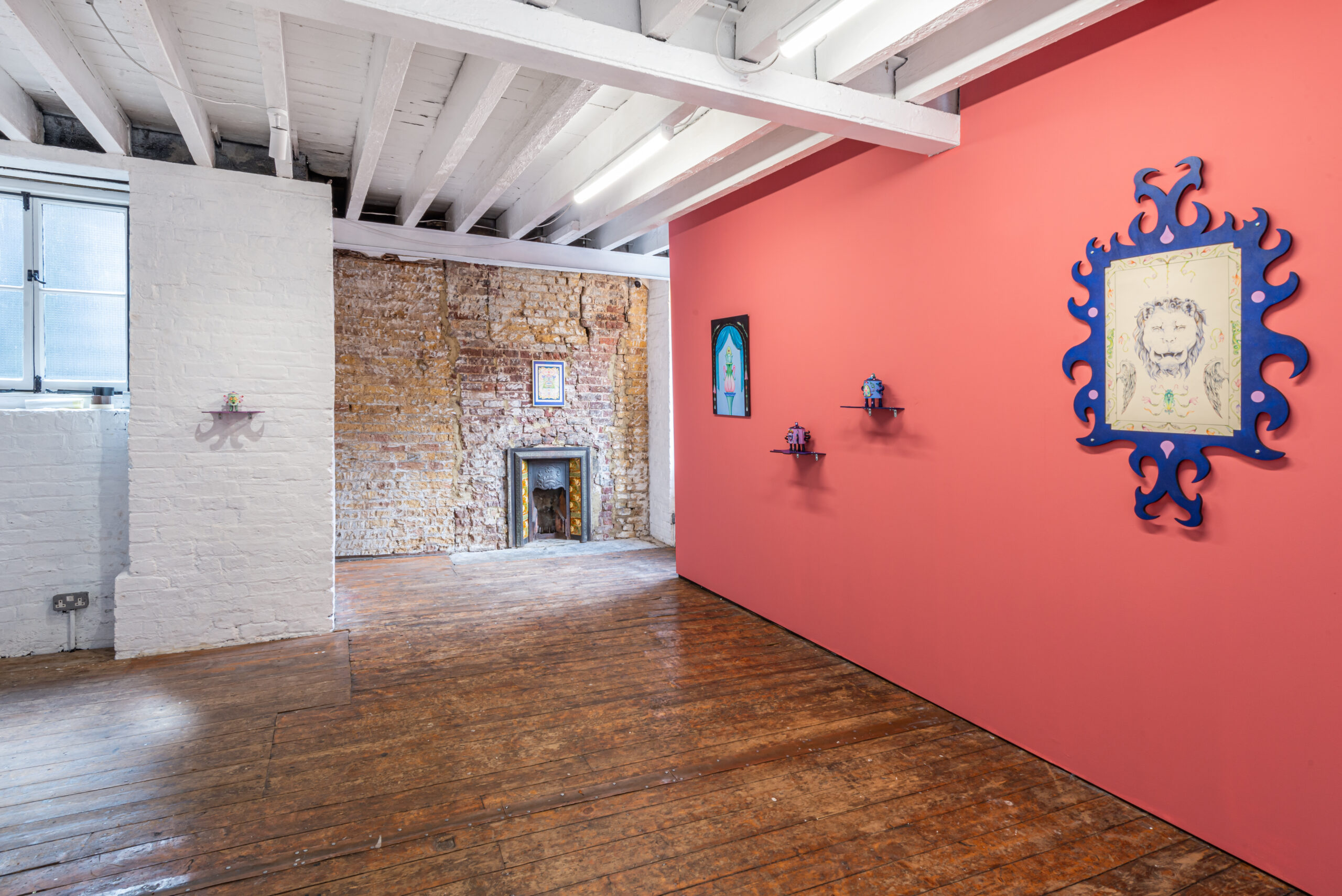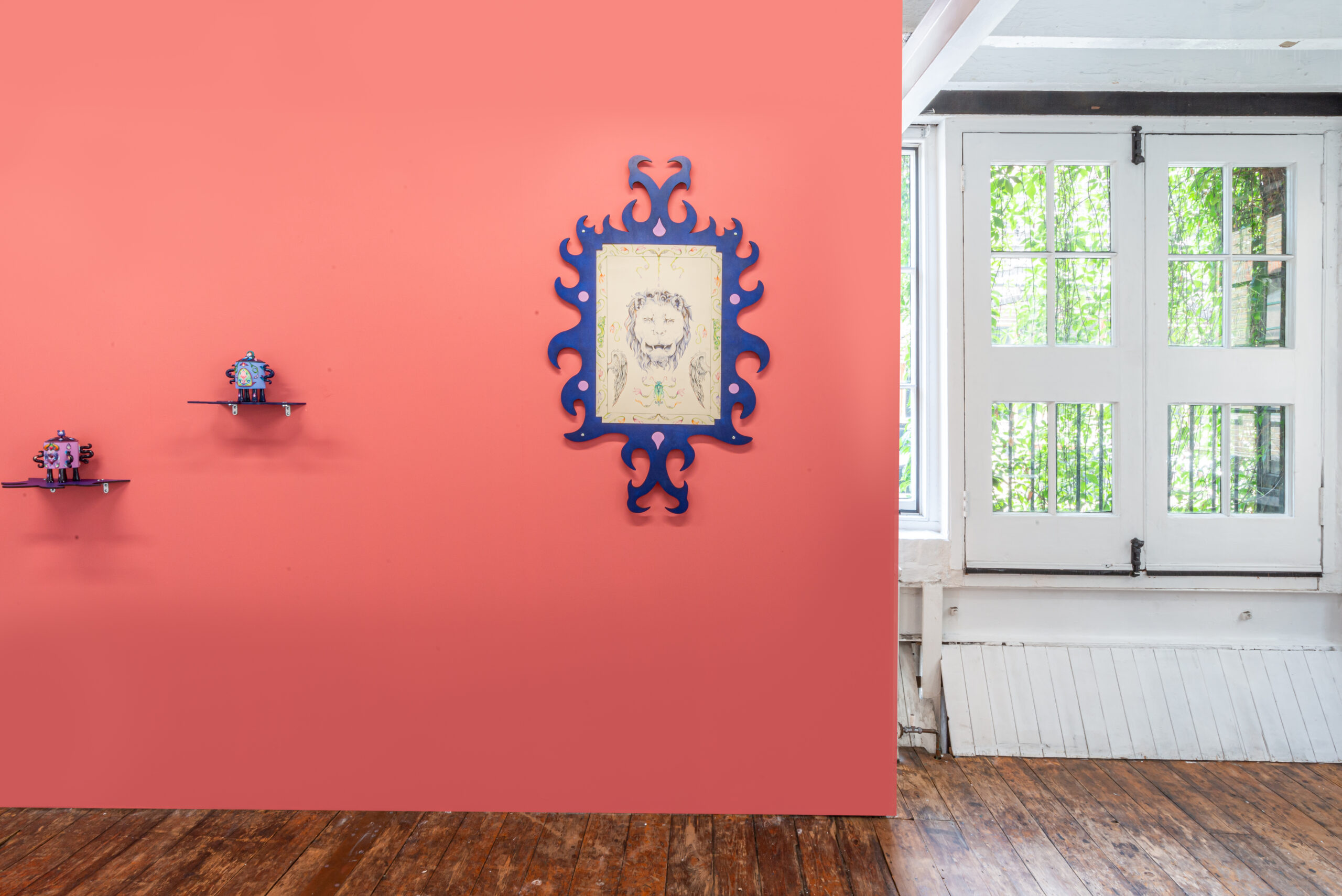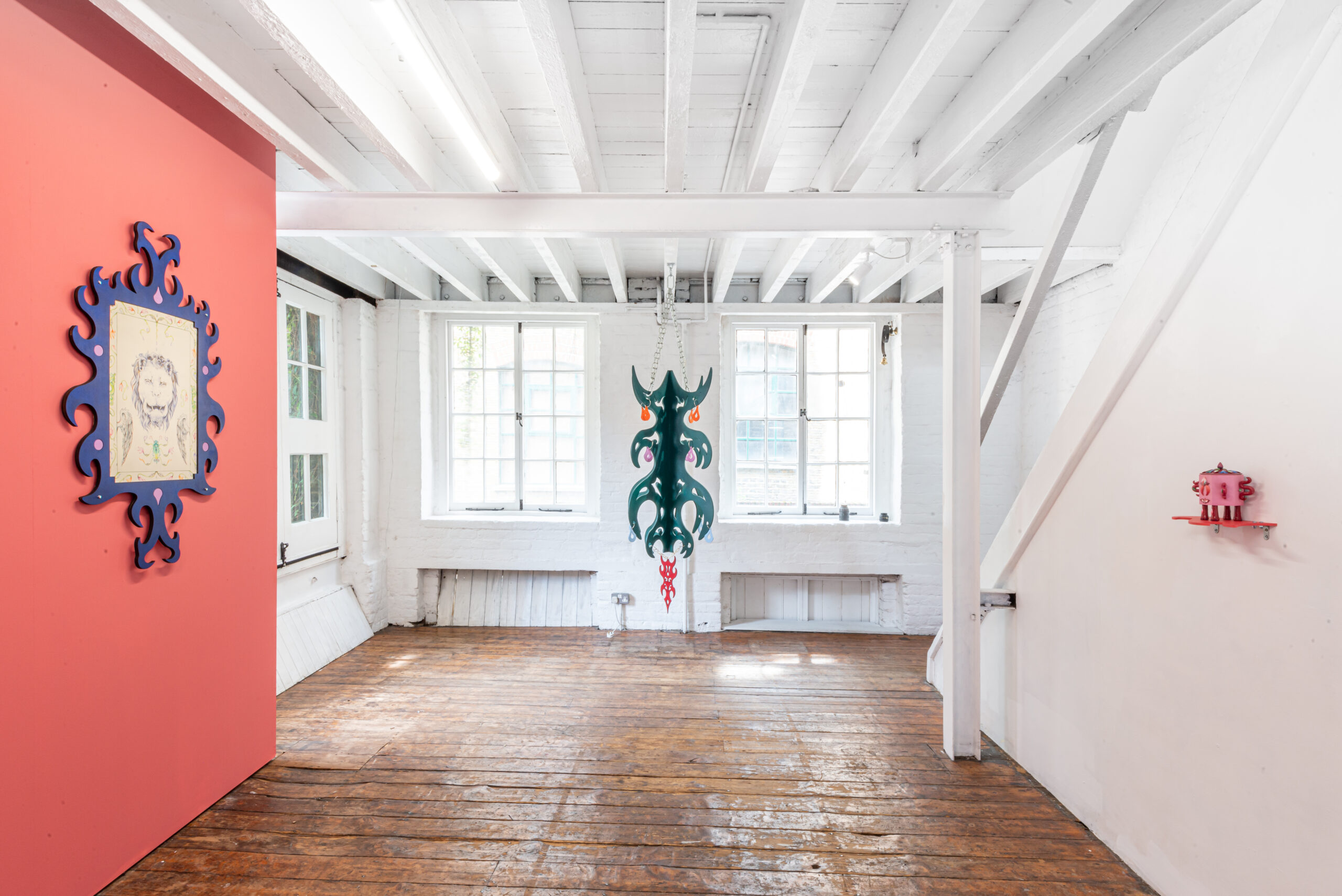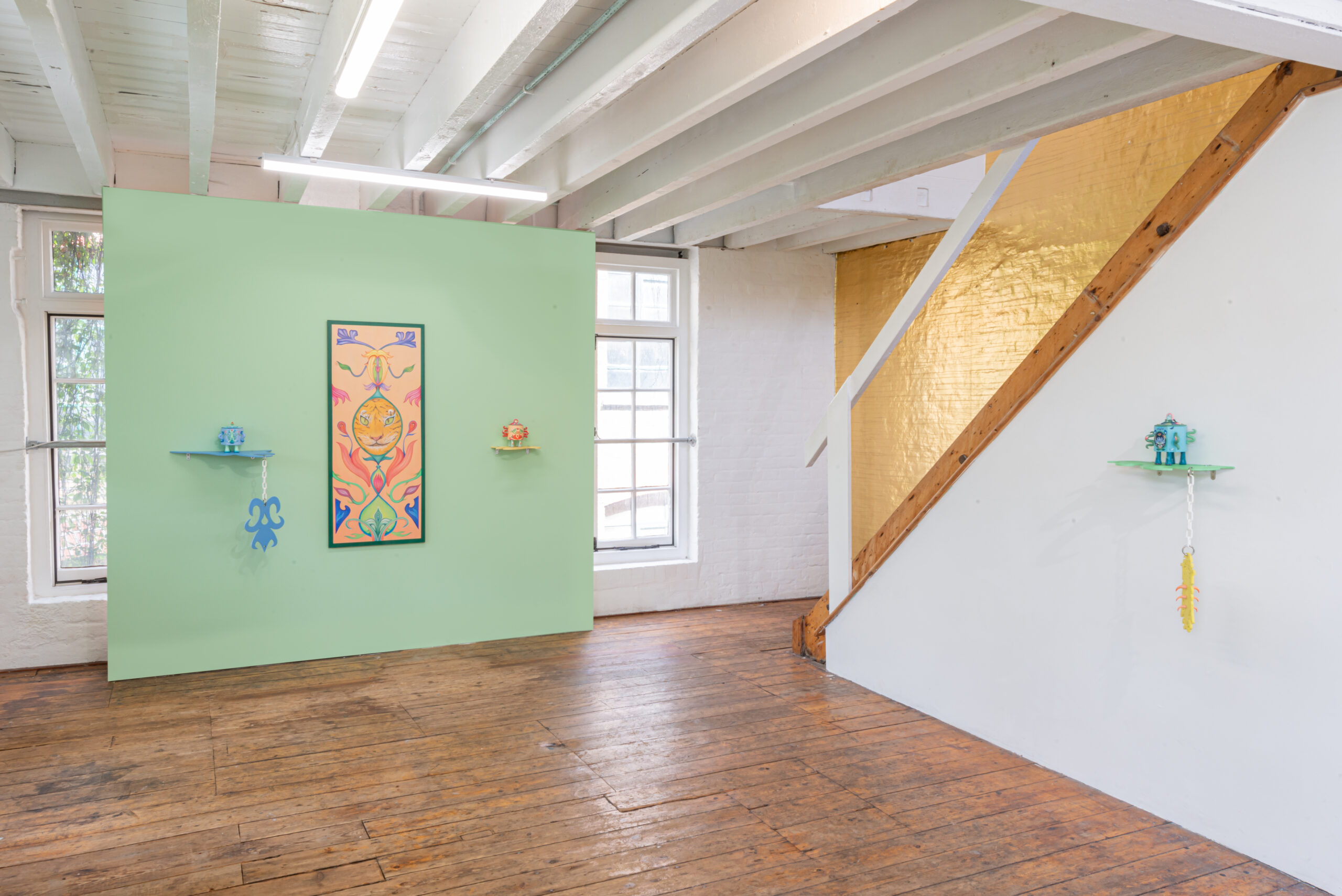Welcome to the second episode of Golden Shower exhibition format Shards of Fire, the solo show by the Chinese-Singaporean and British artist Hannah Lim (1998), who works and lives in London.
Hannah Lim’s practice is built on her mixed cultural identity and Western colonial history, from the 18th-century design of Chinoiseries to nowadays cultural appropriation dynamics. Hannah Lim reimagines the relationship between East and West traditions more appropriately thanks to the realisation of furniture-like sculptures inspired both by the enchanted narrative and background of Classical Chinese literature and anthology – such as The Classics of Mountains and Seas or Pu Songling’s Tales of a Chinese Studio – and the Western mythology, which from its ancient roots and through the medieval bestiaries moves towards the 90’s video-gaming and fantasy atmosphere.
Hannah Lim creates a perfect cultural matching field, introducing new necessities of comparison and relationship between cultures and societies, moving along the ridge between art and design. Proceeding
from the 18th-century theory of Orientalism and its stereotypic representation, Hannah Lim incorporates in her practice the new anthropologic and feminist interpretation of the term proposed by Anne Anlin Cheng in Ornamentalism (2019). As Cheng explains, the Western stereotypic view did not affect only the cultural representation of the East and its traditions but ontologically weighted on Asian women: in addition to the best-known ideas of beauty, elegance and unaccessible grace, women used to be represented like objects, incorporating the typical ornamental aesthetics of silk and ceramics, materials employed in the East artistic production.
By analysing this strict relationship between feminine and cultural identities and art, Hannah researches and reworks the distinctly ornamental and decorative designs of Chinoiseries and how ornament is connected with her artistic style and cultural and womanhood identity. The ornamentalisation and flamboyance of Hannah’s work represent a counter-narration for fixed notions of identity and race and a resolution attempt to balance the confusion and struggle lived by those from mixed cultural backgrounds.






















